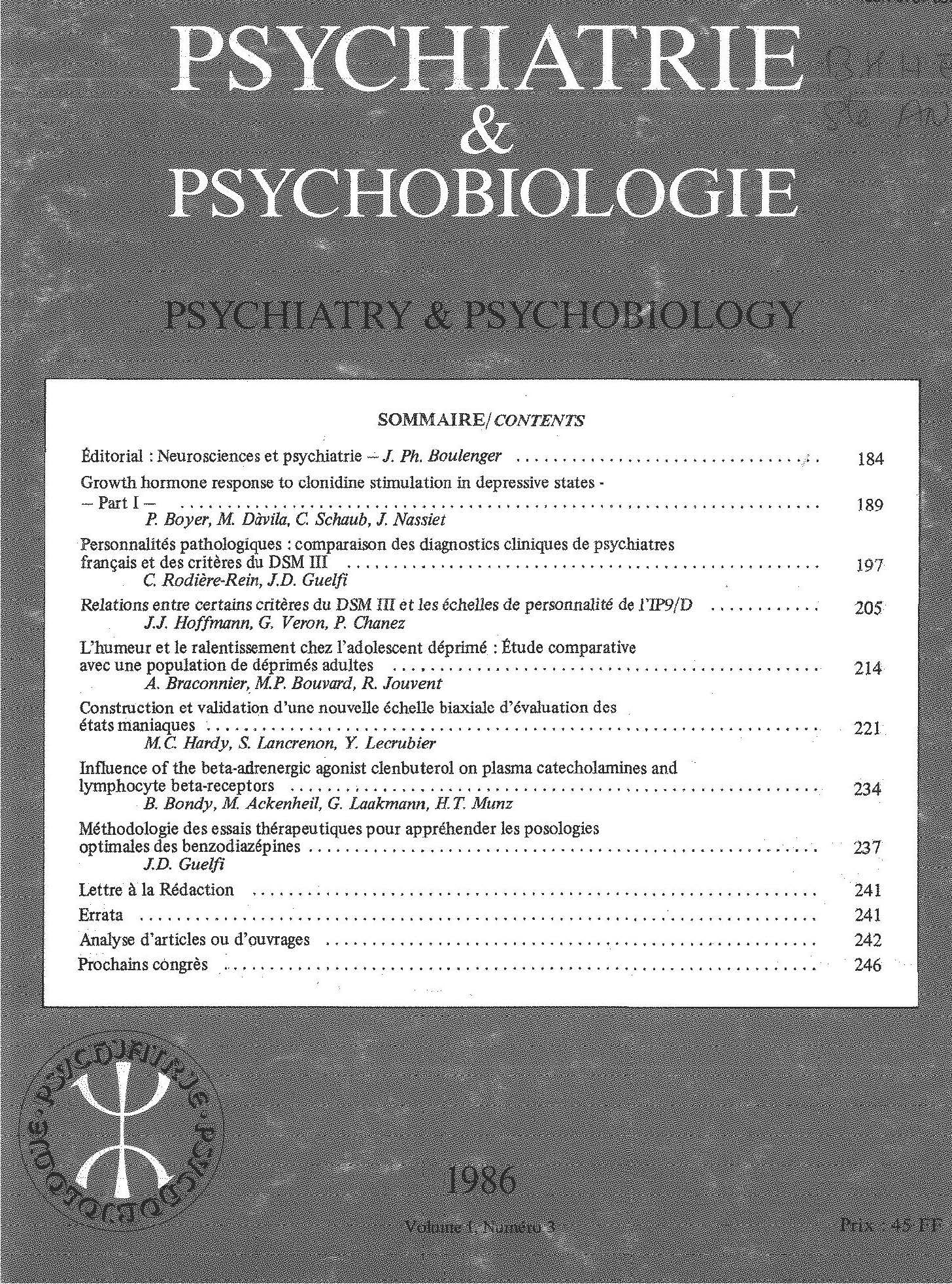Article contents
Activity of several GABAergic agents on the behavioral “despair” test in rats
Published online by Cambridge University Press: 28 April 2020
Summary
The present study was conducted to investigate whether several GABAergic drugs could affect immobility in the behavioral “despair” test (swimming test). The subacute (3 injections) treatment with the GABA-B agonist baclofen 0.5 mg/kg (BC05) partially antagonised the antiimmobility action of imipramine (IMI), whereas muscimol 0.00125 mg/kg (MU ; GABA-A agonist) did not affect the imipramine effect on immobility. The highest doses of baclofen alone increased immobility time, and no effect of muscimol alone was observed on this measure. Other experiments indicated that different doses of δ-α-aminovaleric acid (a GABA-B antagonist and GABA-A agonist) or progabide (a GABA A/B agonist with clinical antidepressive properties) did not modify immobility time. On the other hand, sodium valproate (VPA), chronically administered, was effective in reducing the time of immobility of rats in the swimming test, at doses which did not alter motor activity in an open field test. Since there is evidence indicating that valproate can be considered as a GABA-mimetic agent, the present data is consistent with other results showing an antidepressant-like activity of agents which enhance GABAergic transmission.
Résumé
L’objectif de cette étude fut de rechercher comment plusieurs substances GABAergiques peuvent affecter la réponse d’immobilisation dans le test du désespoir comportemental («behavioral despair», test de la nage). Le traitement subaigu (3 injections) avec baclofen (un GABA-B agoniste), 0,5 mg/kg (BC05) montra une antagonisation partielle de l’action anti-immobilisation de l’imipramine (IMI), tandis que le muscimol 0,00125 mg/kg (MU: un GABA-A agoniste) était inactif sur l’effet «anti-desespoir” de l’imipramine. Les doses supérieures de baclofen augmentèrent le temps d’immobilisation, et le muscimol tout seul n‘eut pas d’action sur cette mesure. D‘autres expériences montrèrent une totale absence d’activité de l’acide δ-α-aminovalérique (un GABA-B antagoniste et GABA-A agoniste), et du progabide (un GABA A/B agoniste avec des propriétés antidépressives en clinique), dans la gamme de doses utilisées. D‘autre part, le sodium valproate (VPA) administré chroniquement fut efficace, montrant une réduction du temps d’immobilisation dans le test du «désespoir», avec des doses qui ne modifient pas l’activité motrice dans un test en «open field». Certains arguments indiquent que le valproate peut être considéré comme une substance GABAergique. Les résultats obtenus sont en accord avec d’autres qui ont démontré pour les substances qui améliorent la transmission GABAergique une activité similaire à celle des antidépresseurs.
Keywords
- Type
- Original article
- Information
- Copyright
- Copyright © European Psychiatric Association 1989
References
- 3
- Cited by



Comments
No Comments have been published for this article.